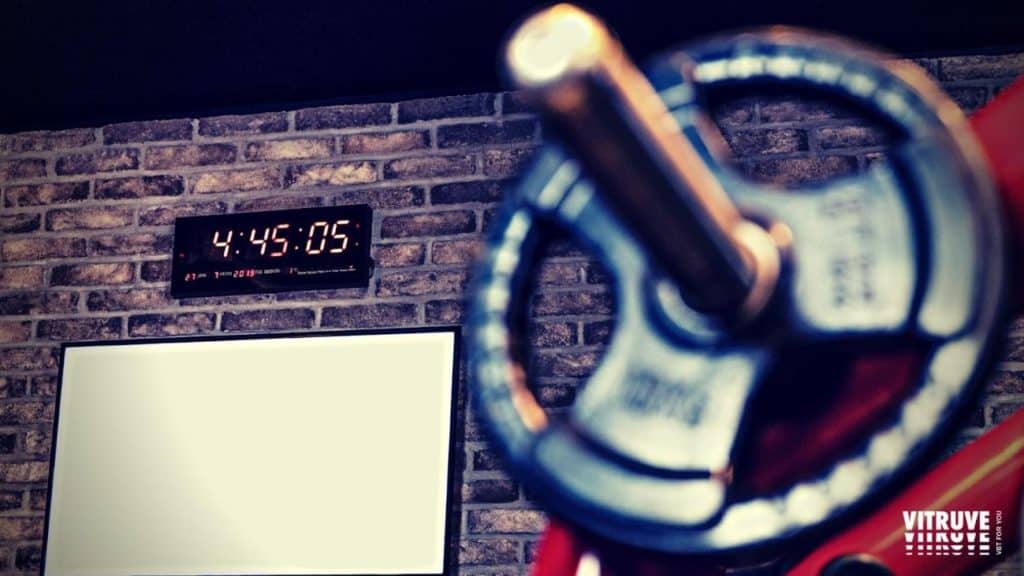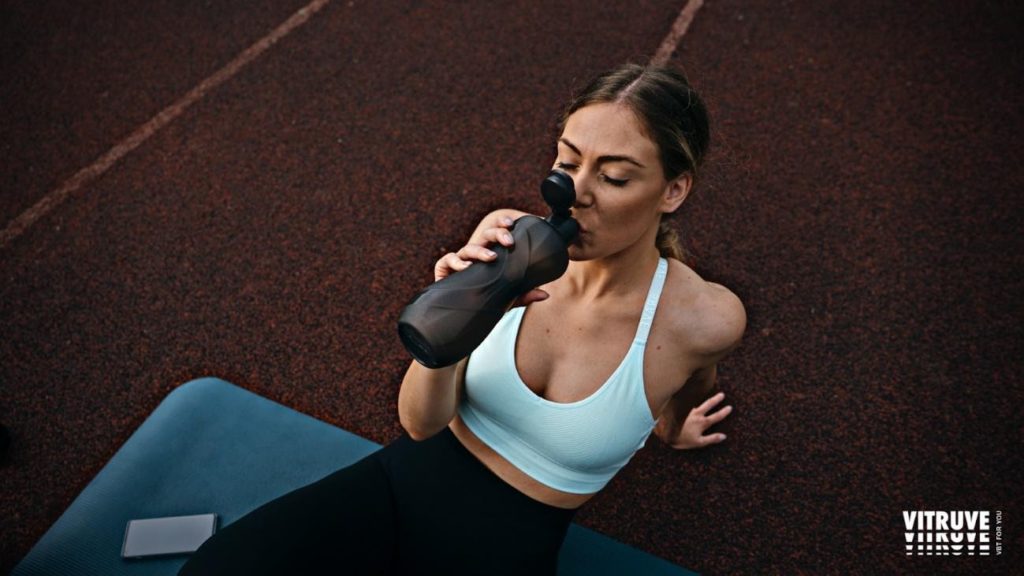6 de December de 2021
The Importance of Regeneration For Athletes
Not making any progress despite the hard and intensive training? Then you may be exercising too much. Just pumping without a break is not a great idea. Because only those who allow their body to recover will benefit from the training. Learn how to regenerate properly.
It is counterproductive for the muscles if they are hardened every day in the gym or forced to perform at their best. Because even if the reflection in the mirror makes the muscles look bigger after a hard workout – they really only grow after the workout. The same goes for endurance. Here, too, the training success is only achieved in the resting phase.
No increase in performance?
In order to understand these relationships, it is important to know what actually happens to the muscles during exercise. During long-term, intense exertion, the body comes to the point where the oxygen it has absorbed is no longer sufficient to meet the muscles’ increased energy requirements.
In order to compensate for the lack of oxygen, it switches to the so-called “anaerobic metabolism”: it begins by converting glucose into lactic acid. This creates lactate. This salt ensures that the muscles eventually become over-acidic and the legs feel heavy and tired.
Microscopic tears also develop in the muscles during exercise. The repair work does not begin until the training session has ended. Not only is the lactate broken down and excreted, but there is also an effect called supercompensation: the trained muscle grows as its fibers thicken. They are trying to prepare for the next training session so that they can cope with the same stress more easily the next time. The volume of the lungs also increases, so that the blood can absorb more oxygen during the next workout and you can continue to increase your lap or put on a little more weight in the gym.
Consequences of overtraining
Breaks are extremely important for the body. This is the only way to regenerate and increase athletic performance. If you ignore these facts, you not only have to expect performance losses but also risk your health.
- Risk Of Injury: Overtraining and a lack of attention increase the risk of injury.
- Weakened immune system: The constant stress weakens the immune system. Viruses and bacteria then have an easy time of it. So if you spend too much, you will catch colds more often.
- Psychological effects: But the psyche also suffers if you don’t give your body time to really recover. Typical symptoms of overtraining are fatigue and listlessness. In the worst case, there is a risk of depressive moods and even burnout.

At least 12 Hours of rest?
How long it takes for a muscle to recover depends on a number of factors. For example, on the age, the personal level of training, or the intensity of the load. For example, young people recover faster than older people and are trained faster than untrained people. There is no generally applicable rule. Nevertheless, there are expert recommendations that can give a rough guide:
Untrained people should allow themselves 24 hours of regeneration time after a relaxed one-to-two hour jogging round, while those who are in training should treat themselves to around twelve hours. After more intensive endurance training, for example, after a one-hour pace run or a mountain run, untrained people should have 48 hours of regeneration, while those who have been trained can get by with 24 hours. So-called high-intensive training, in which the pulse rises, as is the case with sprint interval runs, for example, increases the recovery phase to up to 72 hours or 36 hours for trained athletes.
There are also approximate values for strength training in terms of regeneration time. After moderate endurance training, the muscles need around 48 hours to recover. For those who have been trained, 24 hours are sufficient. With a maximum strength or muscle building training with a lot of weight and fewer repetitions, it can be three days until the muscles have recovered, trained people get by with 36 hours. After high-intensity strength training with explosive weight loads, even those who have been trained should treat themselves to a three-day break. Undrained, understandably more.
There is one important rule of thumb to be observed in any case: Always listen to your body! Severe muscle soreness, for example, is a sign that the muscles still need a little more rest. However, also avoid taking too long breaks. Because without a renewed training incentive, the body rebuilds its performance adjustments. It is best to set up a weekly plan in which you specify training times and rest phases.

Active relaxation
What does it actually mean to let the body regenerate? Put your feet up and do nothing? Of course, you can just lie lazily on the couch after a strenuous workout. However, it is better to offer your body a mix of active and passive relaxation to accelerate muscle regeneration.
If your legs still feel heavy after running or weight training, go for an easy session on the spinning bike or do a few quiet laps in the swimming pool. This type of active relaxation loosens the muscles and helps break down metabolic products more quickly.
A consolation for everyone who does not want to do without their daily sports program: you only have to regenerate those muscle parts that were actually used. So there is nothing wrong with training other structures. For example, if you still have sore legs, you can confidently do an upper body workout or a yoga workout. This also reduces stress and clears your mind again.
Passive relaxation methods include, for example, a visit to the sauna or a bath in the tub at home. The heat stimulates blood circulation and this accelerates the regeneration of the muscles. A massage is also good. In doing so, adhesions in the tissue structures are loosened and tension is prevented. Alternatively, you can get a fascia roll and use it to loosen the muscles and connective tissue yourself.

Regeneration after gym session
In addition, you can do a lot immediately following your workout to help your muscles recover more quickly. The regeneration process can be sped up this way:
Eat Enough Protein
Protein should be consumed after your workout. During exercise, the muscle protein is broken down and resynthesized, so it is important to provide your body with enough amino acids (the building blocks of proteins) so that it can make new muscle. The amount of protein required varies with body weight and exercise intensity. When people exercise regularly, they can often obtain their recommended protein intake through diet alone by consuming some protein at every meal – aim for around 20 grams of protein per meal.
Cool-Down
Always end your training with a cool-down, i.e. an expiry phase. Do not stop the training abruptly, just slow down after the endurance training. Once you have trained your strength, you can go on the treadmill for another 20 minutes, for example, or loosen up your calves with a short lap on the ergometer. In this way, the lactate is broken down more quickly.
Stretching
Do you stretch extensively after exercising? D rather not! Because that can even extend the regeneration time. At the moment of stretching, the muscle is no longer supplied with blood. And this has a negative impact on recovery. It is better to postpone stretching until the next day.
Drink Abundantly
If you sweat a lot, you not only lose a lot of fluids, but also important nutrients. Your body needs minerals most of all now. So be sure to stay hydrated! Your body depends on water for all metabolic functions and nutrient transfers, so fluid replacement after exercise is essential. In order to rehydrate more effectively, you might want to include electrolytes in your drink.
Proper Nutrition
Meat, eggs, and dairy products are ideal because they contain a lot of protein – exactly what the muscles need. Omega-3 fatty acids also accelerate the growth of muscle cells, which can be found, for example, in high-fat marine fish such as salmon. Complex carbohydrates replenish the energy stores.
Last Words
If you are looking to reach your fullest potencial as an athlete and you want to learn more about sport science, VBT training and how to improve your workout routine, we have lots of articles that can help you achieve your goal. If you have any questions, don’t hesitate to ask! Leave a comment or contact us here.

